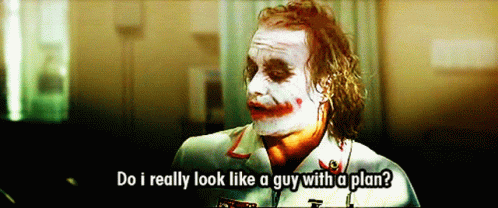We’ve all heard at least one debate about this, read at least five articles on which one’s better, and even tried one or both methods to see what the fuss is about. But the question remains: which method is better?
Today, after so long, I have come here, to give you the answer you’ve long been searching for, and that is…
Whichever works for you.
Boom, mind blown, I know, you would have never expected it, such a sublime, magnificent, extraordinary answer to an age-old battle between plotters and pantsers.
Alright, dropping the act, it truly does come down to that, what works for you and what doesn’t, or whatever elements from either one you can combine to make something that works, as the now so-called plantsers are (and no, this has nothing to do with growing plants of any kind, this isn’t herbology, you know.) If you’re still on the fence about this, unsure about which one may be best for you, the first thing to do is to understand what each of these approaches towards writing are.
Plotting
As the name very well states, plotters are those creative beings who like to have a plot blueprint to work with. Before they set pen to paper, fingertips to keyboard, they first must have some sort of plan, outline, map, diagram, or any other organizational tool in place to know where to start with their story plot.
At a glance, it’s easy to see how this is a beneficial way to write—you’re effectively removing the guesswork from your writing by having something concrete telling you what comes next. Also, this can help reduce the dreaded procrastination curse by eliminating the need to drift off to look for some part of your writing, only to end up in the feed for 3 hours when you could have been working on your book or story.
Here’s a handy list of other benefits for plotting:
- Clear vision of where the story is going
- Allows for a wider view of the story and possible plot holes and other story issues
- Helps to organize your writing and time
- No guessing what happens next (and so less time wasting)
That said, planning does have its disadvantages, a notable one for me is that since it removes that aforementioned guess work, it also removes some of the wonder and amazement of coming up with something on the fly because you already thought it through before. Not that you can’t get surprised when you’re planning, but it’s not the same.
Since lists are fun, here’s another one showing possible downfalls of plotting:
- Planning excessively (so much so you don’t even get to write at all)
- Boxing in the creative process (sticking too much to what’s in the plan and resisting change)
- Make the writing process feel too much like work
- … Insert something else here to make it look even
I’ll link some articles at the end of the post in case you want to look more into these topics, but this is an overview and amalgamation of everything other writers and the Internet has to say on the matter (as well as my own experience).
Pantsing
On the complete opposite end we have pantsing, which comes from the Latin byus theus seatus of theirus pantsus… Totally a fact—not. What is true is that these creators are great at improvising their stories, not really needing any sort of guide to concoct their plot. Much like adventurous pigeons, they can set flight in any direction and not need their compass.
Of course, this free as a bird approach can bring some benefits, such as:
- Freedom of creative direction
- Flexibility in devising their plot
- (Maybe) have some more intuition in their story telling
- Allows for more fun since ideas are coming as they do
On the flip side…
- More chances of running into blanks
- Less organization in the writing (meaning more editing later on)
- Could make the writing process take longer
- Higher chances of growing disenchanted with your story
But wait, there’s one more! I mentioned the word plantser. What’s that, you ask? Well, let me tell you.
Plantsers
This relatively newer term refers to a ying and yang between plotter and pantsers. You guessed it, this is the realm of the best-of-both-world beings who, though they don’t fully plan out their writing, they don’t improvise it with their eyes closed either. It is quite possible that most writers fall in this less discussed though probably more common than not population. Plansters maybe outline basic plot points in bullet point form, but don’t really plan each detail of what happens within each point. Or maybe they have a particular scene in mind, a simple one-sentence notion of what to write today, and write freely without stopping to think where they’re going specifically. OR… Well, you get the point.
If anything, I think plantsers have a good idea going for them and that is, you don’t need to stick to either side too extremely and dismiss the other. Sure, like all things, we tend to lean more towards one side or the other, but there’s always something we can benefit from on the other end of the spectrum. After all, as mentioned at the very start of this post, you got your answer—what works for you works for you.
What’s your take on this never-ending debate? Do you have any different points of view? Let me know! Whatever you think, keep writing ♥
PS: Here are the links I promised!





